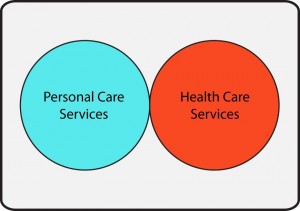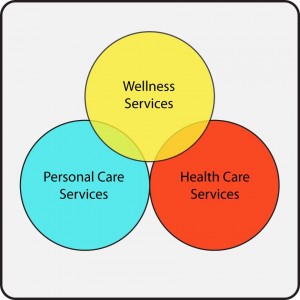The first professional massage I ever received was around 1970 in an old Russian Banya on the near-North Side of Chicago called the Luxor Baths. The clientele was a mix of the old Jewish expats who had moved to the suburbs (Nelson Algren used to hang out here) and the new Hispanic locals. Luxor was an artifact from an earlier time complete with swimming pool, wet and dry saunas, a steam room and metal tables where friends would beat and brush each other with soapy oak leaf brooms.
Luxor also had a massage room and, with some encouragement from my friends, I finally gave massage a try. It was a memorable experience and I have been hooked ever since.
Notably, I didn’t get my first massage because something was wrong with me. I got a massage because it made me feel great and that is the experience I have been seeking to share with the world ever since.
Traditionally, within most cultures, professional massage has operated in two very discreet economic realms: the personal care services industry and the health care industry.
- As a personal care service, massage is found in saunas, spas, hair salons, in the foot massage services provided in the streets of near- and far-Eastern Asian countries as well as neighborhood bathhouses and as various forms of seated massage now throughout the world. This is the kind of massage I received at the Luxor Baths.
- In the health care industry, massage evolved through a variety of healing modalities, such as osteopathy and chiropractic, orthopedic practice, nursing and physical therapy (called physiotherapy in many countries).
 These two domains were easily distinguished from one another both by terminology (customers vs. patients) and by intention (relaxation vs. treatment) and there was generally little confusion or overlap.
These two domains were easily distinguished from one another both by terminology (customers vs. patients) and by intention (relaxation vs. treatment) and there was generally little confusion or overlap.
That clarity started to dissolve in the 1970s as a new economic arena began to emerge. It was called “health promotion” or “wellness” and was a reaction to the dominant health care paradigm, which in fact did not focus on health care, but rather sickness care.
The counterculture that emerged from the sixties first manifested this new approach by embracing such practices as natural childbirth, organic and vegetarian diets, supplements and herbs, and varieties of personal growth dubbed the “human potential movement.” Books such as Our Bodies Ourselves began to advocate rejection of the cult of experts in favor of personal responsibility and control. The goal became prevention, not treatment, and creating a balance that integrated the mind, body and spirit into a unified whole.
Inevitably, business began to capitalize on this cultural trend and the fitness industry was born. Health clubs replaced gyms, Nike shoes replaced sneakers, wellness centers replaced spas and self-help programs replaced the confessional. Also about this time, corporate wellness programs started to get a foothold as companies began to suspect that the only way to reduce their ever-rising health care costs was by encouraging employees to maintain good health through proper exercise, diet, and emotional balance.
Massage slipped easily into this new and exciting economic domain. The Esalen Institute in California championed new approaches to massage that focused on mind/body integration as well as a new category called “bodywork” that included innovative modalities developed by Ida Rolf, Milton Trager and Moshe Feldenkrais.
The advent of this new wellness arena, however, has muddied the once clear distinction between personal care services and health care services as both try to carve for themselves a slice of the wellness pie.
And where has that left the massage industry? Also very muddied. According to the massage schools, associations and regulators, massage is no longer a personal care service, it is a health care service. I can no longer get a massage like I did 40 years ago at the Luxor Baths. Now I have to get massage therapy. But I don’t want a health care massage. I don’t even want a wellness massage. I just want to lie down and bliss out in the hands of someone who makes me feel good. I don’t care if the practitioner has 50 or 500 hours of training. If I like the massage, I will go back. If I don’t, I won’t.
We need to bring back and validate the personal care massage realm. That is where the most growth is happening (chair massage and franchise table massage), that is where the jobs are, and that is where I want to get my massage.
Do you believe massage should reclaim its identity as a personal care service? Does defining massage exclusively as “therapy” confuse the public and needlessly restrict our growth?




I agree with the author. Massage could be a simple, straight-forward term and practice, if it was not finessed so much. I believe the market is its own regulator. Education of our clients is, indeed, important, and they will decide whether the massage answered their needs or not. Over-regulation is costly and unecessary!
Pingback: MTBOK: Missed Opportunity? | |